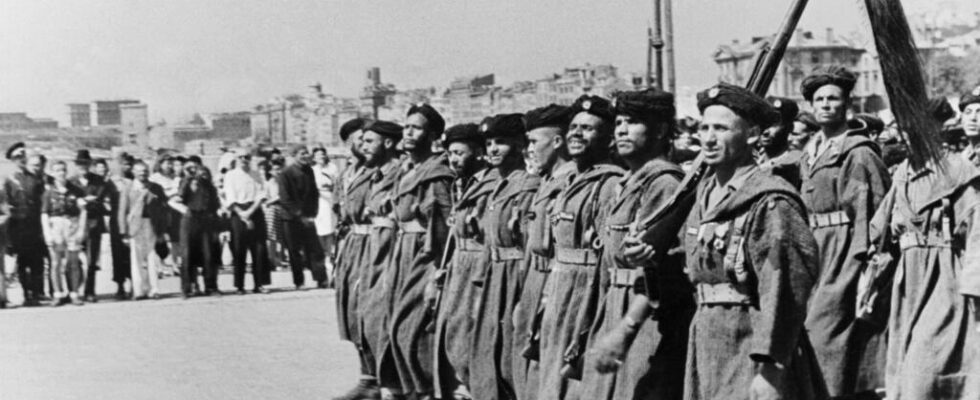80 years ago today, two months after the Normandy landings, American, French and colonial troops landed in Provence. Objective: the liberation of France and Europe from Nazism. The event is commemorated today in the Var. It was on the beaches of this department that 100,000 soldiers landed on August 15, 1944. An international ceremony to which several African heads of state have been invited is taking place today in Saint-Raphaël. A few kilometers away, in Fréjus, a museum of the Marine Troops is hosting a temporary exhibition that traces the history of this landing and highlights in particular the role played by African soldiers.
Uniforms, weapons, vehicles… The exhibition at the Fréjus Marine Troops Museum, in the south of the Francetraces, through authentic objects, photos, maps and diagrams, the history of the landing in Provencean event whose scale is first recalled by numerous figures: 2,000 bombers dropped 8,000 tons of bombs. Nearly 400,000 soldiers landed, including 100,000 on August 15 alone. Soldiers who arrived aboard hundreds of ships, including more than 130 combat vessels and nine aircraft carriers in support.
” Witnesses at the time say they woke up in the morning and the sea was black with ships.says Inspector General Marc Morillon, president of the museum’s scientific council. This is why it is a little difficult to understand why it goes a little unnoticed, compared to the Normandy landings. It’s still a very big operation! »
The material resources delivered were also colossal. 500 combat tanks and 11 000 vehicleshe lists. With technical problems: landing a thirty-ton tank on a beach is not something very obvious… »
Of the soldiers who landed, 260,000 were from Army B, the reconstituted French Army. A force composed largely of colonial troops, a point that the exhibition makes extensively.
” We decided to create an exhibition at human heightexplains Marc Morillon. That is to say, we present the fighters to you, with portraits. » Portraits, real or fictional, of soldiers from different units are thus presented. For example, with Issa, a soldier from the fourth regiment of Senegalese riflemenwho landed on August 17, 1944 at La Nartelle, near Sainte-Maxime…
” It was equipped in the American stylehe describes. This is the first time he sees France. So, he is surprised to discover this country and this soil. And then, of course, the first battles, on the outskirts of Toulon, where they are forced to dislodge German positions with machine guns. This rifleman did not exist. We took a first name common among the Senegalese, then the history of the fourth regiment of Senegalese riflemen. We know what battles they did, so it is easy to imagine the story of a soldier afterwards. »
Also presented, the riflemen’s route North African. ” There you have the Moroccan goumiershows Marc Morillon, easily recognizable by his djellaba and his American helmet from 1917, which is said to have been the terror of the Germans. They were very tough warriors, originally from the Rif or the Atlas. The Germans were terrified of falling into their hands. »
Drawings and period photos also return to the central role played by African riflemen. In particular, the liberation of Marseille and the capture of Notre-Dame de La Garde. This basilica overlooking the city was liberated thanks to the decisive role of Algerian riflemen.
Also readRiflemen: “They had the aura of those who had seen other horizons”
